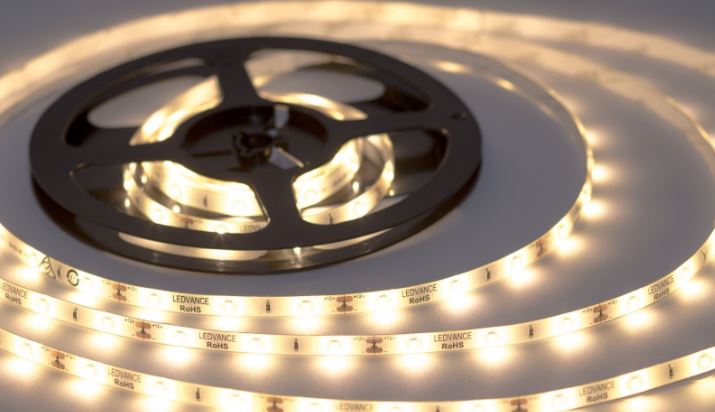LED light strips offer an innovative way to illuminate almost any space. They are versatile, energy-efficient, and easy to install, making them a popular choice for homes, businesses, and creative projects. Here’s everything you need to know about these lighting solutions, from their features to installation tips.
Key Features of LED Strip Lights
LED strip lights typically share these characteristics:
Flexible Circuit Boards: Equipped with multiple LED emitters on narrow, flexible boards for easy installation on curved or uneven surfaces.
Low-Voltage Power: Operates on low-voltage direct current (DC), ensuring safety and energy efficiency.
Customizable Options: Available in fixed or variable colors and brightness levels.
Easy Installation: Shipped on reels, they can be cut to length and mounted with adhesive backing.

Common LED Types and Brightness Levels
Popular LED Types
The most common types include 2835 and 5050 SMD emitters, with brightness and color depending on the emitter quality.
Measuring BrightnessBrightness is measured in lumens. For comparison:
- A standard LED bulb offers 500 lumens.
- LED strip lights typically provide 450 lumens per foot or 1,500 lumens per meter.
When choosing a product, always verify its lumens rating to ensure adequate brightness without overdriving the diodes, which can reduce lifespan.
LED Density: Choosing the Right Product
The density of LEDs on a strip plays a crucial role in determining its brightness and overall effect. High-density strips, featuring 36 LEDs per foot and producing approximately 450 lumens, are perfect for task lighting where bright and even illumination is essential. Medium-density options, with 22 LEDs per foot and about 280 lumens, are well-suited for general lighting purposes, providing a balanced brightness level. Low-density strips, containing only 9 LEDs per foot and generating around 120 lumens, are ideal for decorative applications, creating subtle and aesthetically pleasing visual effects. While high-density LED strips ensure even and consistent light distribution, low-density options excel at delivering softer, more understated lighting effects.
Types of LED Strip Lights
Here are the five main types of LED strip lights:
AC LED Flex Strips: Plug directly into standard outlets for easy installation.
DC LED Flex Strips: Flexible and cuttable, with waterproof options available.
LED Rope Lights: Encased in a durable rope for omnidirectional lighting.
Plug-and-Play Strips: Immediate functionality with minimal setup.
High-Output Strips: Deliver the brightest light, ideal for commercial use.
How to Install LED Strip Lights
Follow these steps for successful installation:
Prepare the Surface: Clean and dry the area to ensure the adhesive sticks properly.
Measure and Cut: Unroll the strip, measure your space, and cut only at designated points.
Install Connectors: Use corner clips or connectors for smooth transitions around bends.
Apply the Strip: Peel off the adhesive backing and press firmly onto the surface.
Connect Power: Attach the strip to its power source and test functionality.
Adding Ambiance with LED Strip Lights
LED strips enhance the ambiance of any room. Popular applications include:- Bedrooms: Behind headboards or under bed frames for soft, indirect lighting.
- Living Rooms: Around ceilings or TVs for a modern look.
- Kitchen: Under cabinets or along countertops for task lighting.
Conclusion
With their versatility and ease of use, LED strip lights are a fantastic addition to any space. By choosing the right type and following proper installation steps, you can transform your environment with vibrant, energy-efficient lighting.


